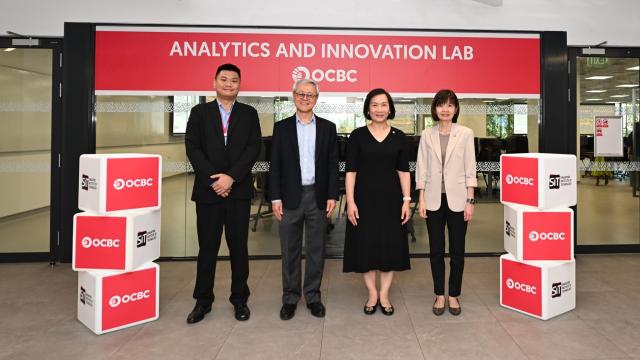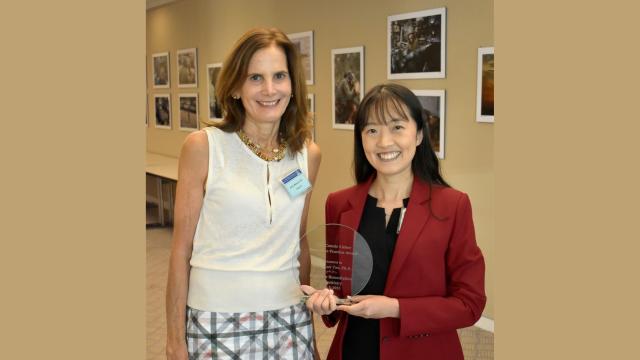A cursory glance around the upscale restaurant reveals nothing out of the ordinary.
Until you notice that the kitchen crew and waiters are all students.
“They’re in these four walls for 12 weeks. This is the pinnacle of their difficulty,” says Associate Professor John Storm, chief instructor on the restaurant floor. “Everything they’ve learned, from cooking to service techniques; it’s coming together now.”
As silver cloches on white platters stream out of the kitchen of Top Table restaurant, which is located at The Culinary Institute of America (CIA) Singapore building in Temasek Polytechnic, I look over my shoulder and see a table of three wide-eyed guests mesmerised by a dazzling spectacle of sliced banana flambé in a rechaud skillet.
It is that time of the year again.
Each year, between the months of August and November, guests dining at Top Table get to sit in on CIA’s ‘experiential learning’ class for undergraduates reading the Bachelor of Professional Studies (BPS) in Culinary Arts Management: Contemporary and Formal Restaurant Cooking & Hospitality Service.
Professor Storm, who flies in from the US every year to supervise the students, fills me in on the capstone classes, which are evenly split between the kitchen and restaurant floor. “For three weeks, Monday to Fridays, the students come in at 7am, come out at 3pm. In the kitchen, we have one chef instructor, and two sous chef positions which students assume. On the restaurant floor, we have one main instructor, a student maître d’ and two student captains,” he said.
In the first three weeks, he elaborates, half of the capstone students would work in the kitchen in adherence to the hallowed mise-en-place culinary doctrine of organisation and prioritisation while the other half would man the restaurant floor as service staff, keeping pace with the ‘order, fire and pick-up’ routine. Then the undergraduates swap places for up to six weeks, before switching back in the remaining three weeks.
Eve Felder, Managing Director, CIA Singapore, explains the raison d’etre for the 12-week experiential learning stint: “These production classes are where we need customers to come in and eat. The students also do front of the house – they’ll be your waiters; they’re cooking or on the floor, serving you, selling you wine and making sure your experience is great.”
For second year undergraduate, Gwyneth Ang, who later prepares my Tartare de Boeuf (Steak Tartare) with flourish on a French gueridon side table, working at Top Table has given her new insights into the restaurant business. “It has helped me grow and honed our people-to-people, even life skills. It prepares us for the real world,” she says.
On the menu, there are no brash new expressions of haute cuisine nor molecular gastronomical fare which is all the rage with the jet set today; rather, the dishes are flavourful French staples – Sauté de Foies de Poulet et Oeuf Poché (Sauteed Chicken Livers and Poached Egg); Saumon à la Polonaise (Pan-roasted Salmon with Cauliflower Puree); and Canard Rôti (Slow Cooked Duck with Roasted Winter Vegetables).
Sauté de Foies de Poulet et Oeuf PochéSaumon à la PolonaiseCanard Rôti
Desserts are also decidedly Gallic, including Îles Flottantes Tropicales, ‘floating islands’ of meringue swimming in passion fruit sauce; Dark Chocolate Souffle with Chocolate Grand-Marnier sauce; and Banane Flambée, slices of banana steeped in brown sugar and rum, which is also prepared in table-side style.
Îles Flottantes TropicalesBanane Flambée
 Ultimately, the capstone classes function more than just a sneak peek into the real world of gastronomy; in the grand scheme of things, the 12-week classes also serve as creative ‘back to the drawing board’ workshops. Chef Gypsy Gifford, kitchen chief instructor reveals that the students themselves are involved in recipe development during the capstone programme. “They take a recipe, critique it and continually revise it,” she explains.
Ultimately, the capstone classes function more than just a sneak peek into the real world of gastronomy; in the grand scheme of things, the 12-week classes also serve as creative ‘back to the drawing board’ workshops. Chef Gypsy Gifford, kitchen chief instructor reveals that the students themselves are involved in recipe development during the capstone programme. “They take a recipe, critique it and continually revise it,” she explains.
All in all, the classes are the culmination of CIA’s education in the culinary arts, one which preserves the essence of tradition while evolving it in a fresh way, explains Chef Felder.
At this juncture, I ask her if she might be referring to ‘Singaporean cuisine’.
Chef Felder pauses for several seconds. “Our kids have to preserve it [Singaporean cuisine],” she muses. “They have to know it, preserve it and document it. Right now, it’s ad-hoc; hawkers cannot teach their craft. Our guys have to go in and learn and understand that craft. That’s what the French have over anybody; they set up a system so our students will ultimately do that. Through the lens of professionals.”
CIA Top Table
Temasek Polytechnic
21 Tampines Ave 1
Block 31
Singapore 529757
Lunch: 28 August – 7 November
11:30 – 13:00
Dinner: 8 & 10 November
18:00 – 20:00
Self-Service Dinner
18 November – 3 December
18:00 – 19:00
![[FA] SIT One SITizen Alumni Initiative_Web banner_1244px x 688px.jpg](/sites/default/files/2024-12/%5BFA%5D%20%20SIT%20One%20SITizen%20Alumni%20Initiative_Web%20banner_1244px%20x%20688px.jpg)








